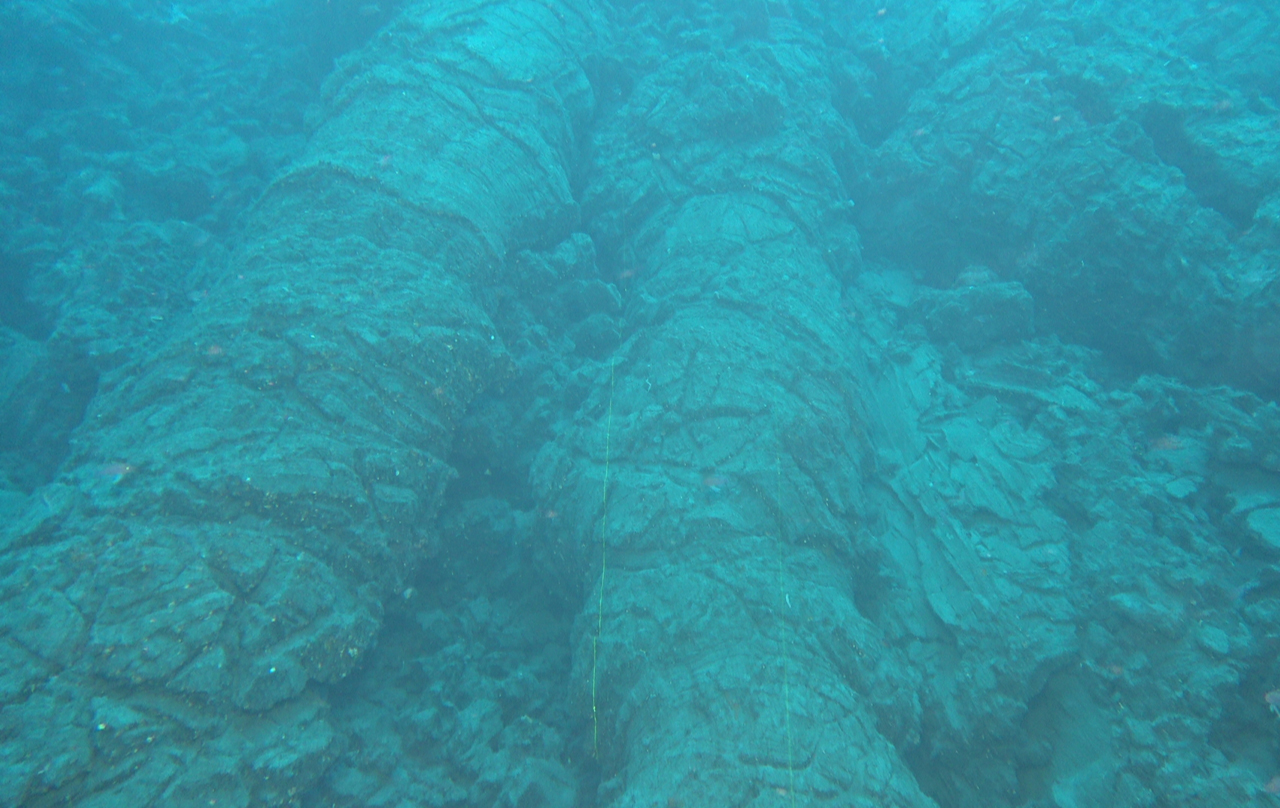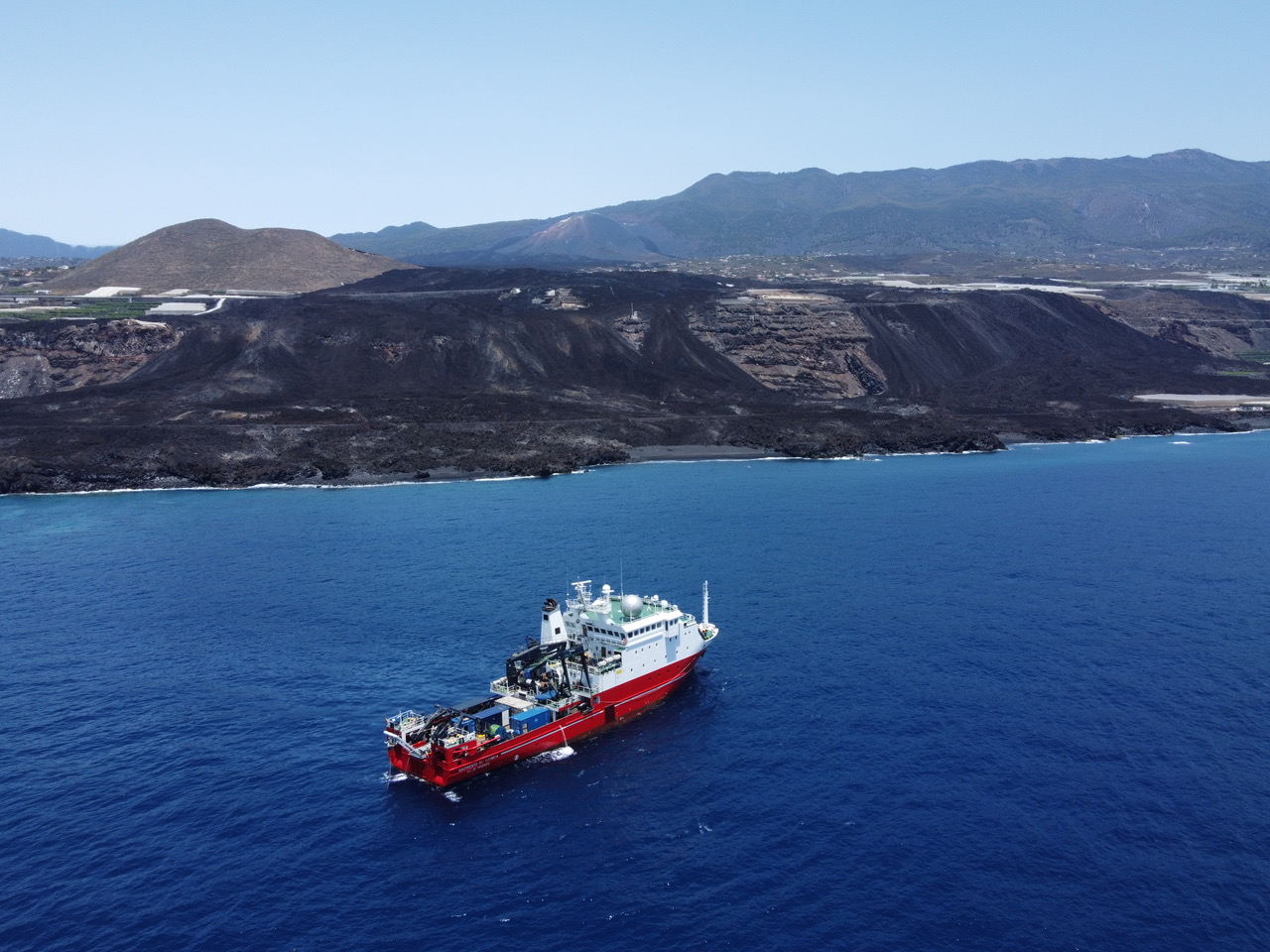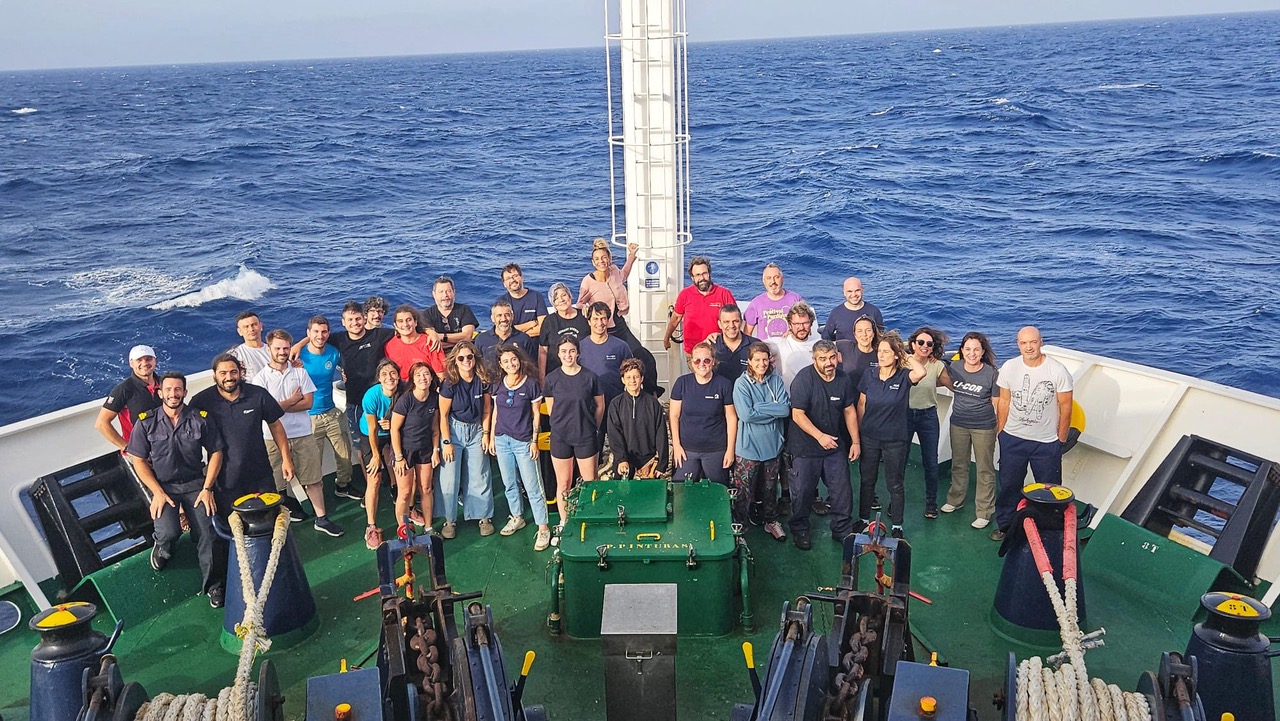During this first phase of the campaign, it has been confirmed that the Top T lava flows (Tajogaite, Tagoro and Teneguía) show a marine biodiversity that has colonised these new volcanic formations, mainly composed of black coral
The Biodiversity and Conservation group (BIOCON) of the Institute for Research in Sustainable Aquaculture and Marine Ecosystems (ECOAQUA) of the University of Las Palmas de Gran Canaria (ULPGC) is participating in the national research project ATLANTIS, which has launched a 40-day oceanographic campaign to observe the colonisation that has taken place in the three youngest volcanoes of the Canarian archipelago, known as the Top T: Teneguía and Tajogaite, formed in 1971 and 2021, respectively, on La Palma, and Tagoro, which was generated in 2011 on El Hierro.
 Tubes of new lava flows (Image obtained with the ROV LUSO - EMEPC).
Tubes of new lava flows (Image obtained with the ROV LUSO - EMEPC).
This campaign, which is being carried out on board the Oceanographic Vessel (O/V) Sarmiento de Gamboa and which will end on 6 August, is organised by the Spanish Geological and Mining Institute (IGME) of the Spanish National Research Council (CSIC) and involves more than 45 people, including the crew and the scientific team. On board the vessel is the researcher Inma Herrera from ECOAQUA, who is participating in this project together with Ricardo Haroun, director of the university institute of the ULPGC.
The Sarmiento de Gamboa is a multidisciplinary research vessel, whose instrumentation and laboratories allow studies of global ocean circulation, marine biodiversity, fishing resources and climate change; it is also used to carry out work in geology, marine geophysics, hydrography, physical and chemical oceanography, marine biology, resource estimation (fisheries), ocean monitoring with remotely operated vehicles (ROVs, AUVs, submarines, etc.), and deployment of underwater observatories (OBSEA, GEOSTAR).
 O/V Sarmiento de Gamboa off the lava deltas of the island of La Palma (Photo by Lieutenant Joaquín Gaztelu Ruiz, IHM-ARMADA).
O/V Sarmiento de Gamboa off the lava deltas of the island of La Palma (Photo by Lieutenant Joaquín Gaztelu Ruiz, IHM-ARMADA).
Precisely, observations have been made with an ROV (ROV LUSO - EMEPC) on the new lava flows of the Tajogaite volcano, which have confirmed that the lava flows can reach a depth of 350 metres in the case of the island of La Palma, presenting a marine biodiversity that has colonised these new volcanic formations, mainly composed of black coral (Stichopathes sp.).
The presence of this coral garden is an indicator of the rapid adaptation of marine life to changes in the underwater volcanic environment. An exhaustive study is also being carried out of the hydrothermal vents and the seabed in the three volcanoes as a whole, from a multidisciplinary perspective that includes geology and biology, which will provide a comprehensive understanding of the processes and phenomena that are occurring in these ecosystems.
Specifically, Inma Herrera, PhD in Marine Sciences from the ULPGC, is responsible for obtaining a detailed photograph of the benthic habitats of the seabed in Canarian waters to create a catalogue that will be incorporated into the Marine Spatial Management Plan (POEM) of the Canary Islands; and characterising the zooplankton, analysing the effects of hydrothermal sources on the marine food webs in the areas of the three volcanoes.
The Atlantis project is led by the scientist Luis Somoza of the Spanish Geological and Mining Institute, and involves, in addition to the ECOAQUA institute, several institutions from Spain and Portugal, such as the Volcanological Institute of the Canary Islands (INVOLCAN - ITER), the Complutense University of Madrid (UCM), the Hydrographic Institute of the Navy (IHM - ARMADA), the Marine Technology Unit (UTM-CSIC) and the Mission Structure for the Extension of the Continental Shelf (EMEPC, Portugal).
 Photo of the researchers taking part in the campaign on board the oceanographic vessel Sarmiento de Gamboa (Photo by Lieutenant Joaquín Gaztelu Ruiz, IHM-ARMADA).
Photo of the researchers taking part in the campaign on board the oceanographic vessel Sarmiento de Gamboa (Photo by Lieutenant Joaquín Gaztelu Ruiz, IHM-ARMADA).


